Do not take me for granite – Gallery Ann Mazzotti, Basel, 2022
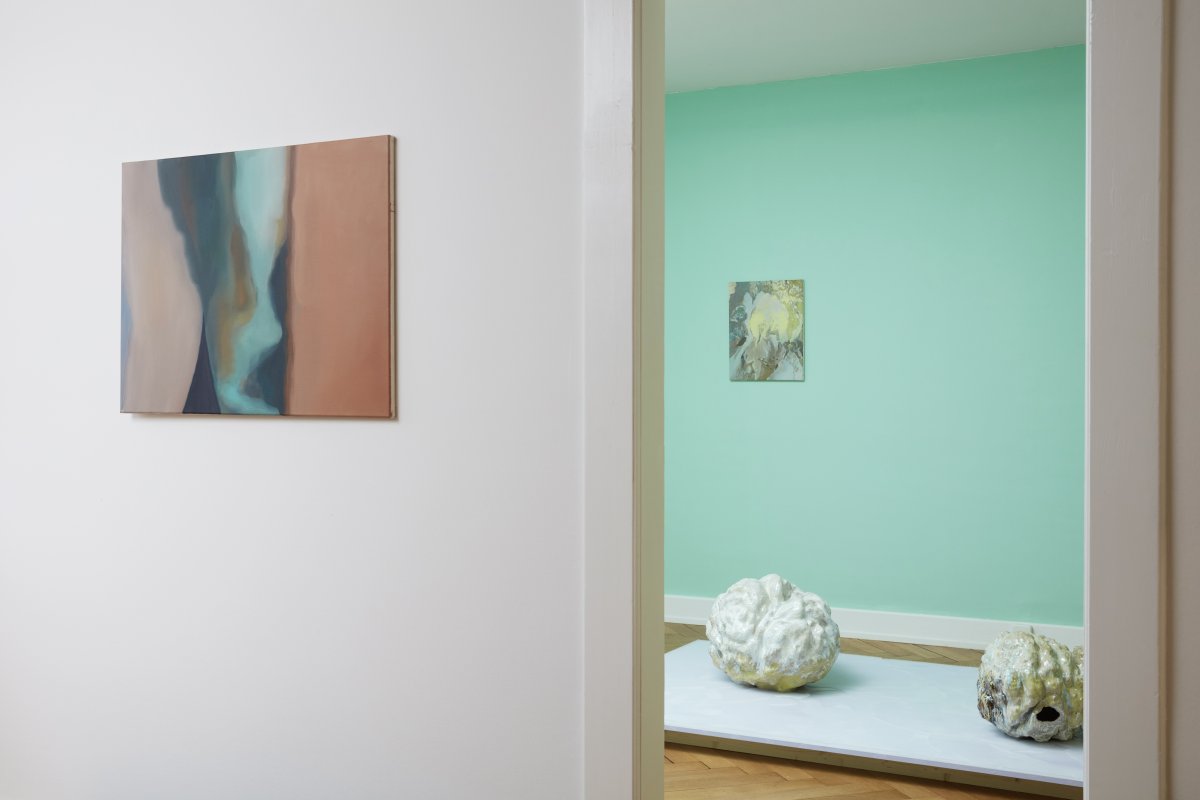
Exhibitionview Do not take me for granite, Gallery Ann Mazzotti, Basel. December 2022. Installation shots: Christoph Laeser
textIn her genre-morphing novel in verse, the poet and classicist Anne Carson harnesses the mythic power of volcanic matter to capture the sublime: or that expression of something that is both before us and beyond us, familiar but indeterminate with a power to both compel and destroy. Poets across all cultures have used the physical properties of substances to build metaphors that can transfigure thoughts into things and things into thoughts. Dimitra Charamandas also works with this poet’s sense for the immanent alchemical potential of materials to speak to those deep wells of mythic magma that flow beneath our surfaces, and like Carson she shows a fascination for volcanic landscapes.
One of the two largest largest paintings in the show, Caldera, iridescent lake (2022) is a vaporous portrait of an iridescent lake, set like an enormous jewel inside the crater of a volcano. These works are not landscape paintings in any traditional sense. What is a landscape but a chorus of matter sliced into sections by our own subjective limitations. It is our own eyes that make the horizon, but these are landscapes without horizons that take a divine view of nature’s geological splendour, authored by the slow build of pressure over inconceivable eras of deep time.
Charamandas comes from painting and all the works in this current constellation stem from this impulse to fix a semi-precious slice of the sublime to a surface. Learning how to paint an imitation of stone, especially marble, was one of the hallmarks of a traditional artistic training. But Charamandas’ stone-scapes bend the lines between genres. She makes use of a mixture of nature’s most beguiling and toxic tones from bauxite browns to arsenic greens, mining that paradoxical space between desirable and deadly. Nature’s so-called poisons have, after all, been used for their medicinal value for millennia. The walls of one room are painted in what might be called Paris Green, an exquisite arsenic-based hue beloved by the Impressionists until it proved too toxic for everyday use and is now mostly employed as an insecticide. This colour occurs naturally in volcanic lakes, caused by extreme acidity and high concentration of dissolved metals in the water caused by gasses bubbling up from deep within the earth. Acid lakes are a lethal and beguiling aperture between the inhabitable world and its seething hot interior, between horizon and core.
The ceramic works Expanding Bodies (2022) sit on a lilac plinth layered with paraffin wax, another ambivalent material, both an effective skin emollient with the pursuit of beauty that implies, and a by-product of crude oil and the ugliness the extraction process entails. The wave-like forms over the surface of this poured paraffin plinth echo the earthen contours in the paintings, here the aesthetics of natural laws that govern tension play out on different scales. Ceramic is an art form that takes its name from the Greek word κεραμικός (keramikos), "of pottery”. Like volcanic magma, ceramic works are a testament to the transformative, state-changing possibilities of heat, where something as hard as granite becomes as soft as mud and something as soft as clay becomes as brittle as glass.
The title of the exhibition is taken from a text by another heroine of material-other-worlding and a pioneer of sci-fi speculative fiction Ursula K Le Guin. In her text of the same name, she puns on the catchphrase ‘being taken for granted’ which commonly means being fatally overlooked or underestimated, employing a playful feminist sense of irony she exchanges this for granite, complaining that people associate her with this hard, cold, unyielding stone. Instead, she writes, she thinks of herself as mud, for “mud lies around being sweet and heavy and oozy and generative”, unlike granite, her mud-based notion of self can “yield and react and respond and give way and adapt and accept”.
As part of the exhibition the artist will cook and share food in (and outside) the space in collaboration with the collective ffffffermentation. Turning communal hospitality into a social practice that activates and opens the works and collapses the often impersonal divide between artwork and viewer into that of offering and guest. A feast for both eyes and belly.
Just like the volcano, where the landscape turns itself inside out, here insides and outsides are rolled together, psyche and soma, surface and depth, poison and cure, all dissolved in a generative mud-bath in Charamandas’ search for new subjectivities.
Leila Peacock
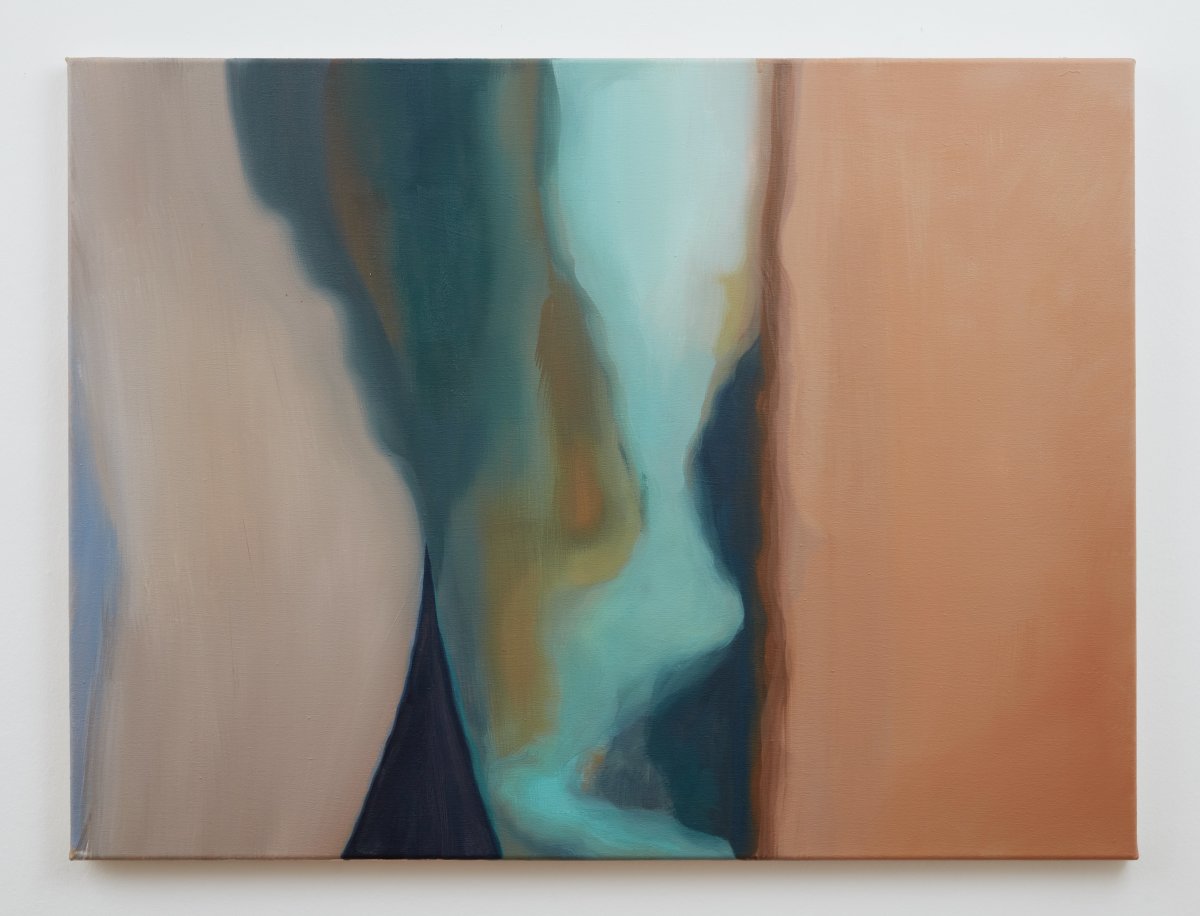
Epidermis, 2022, acrylic on cotton, 60 cm x 80 cm
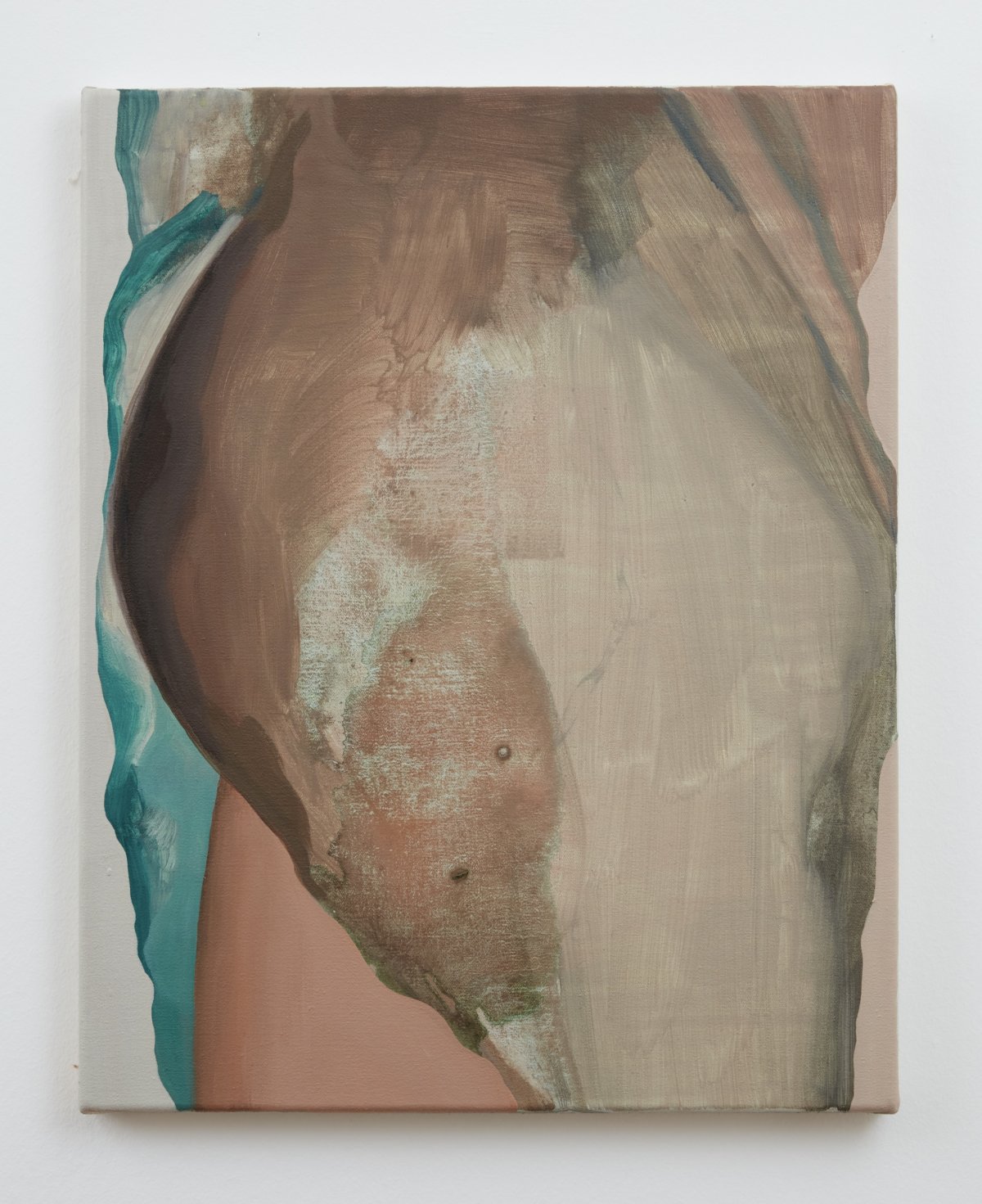
Belly (Demi), 2022, acrylic on cotton, 48 cm x 38 cm
“I am molten matter returned from the core of the earth to tell you interior things…”
The Autobiography of Red, Anne Carson
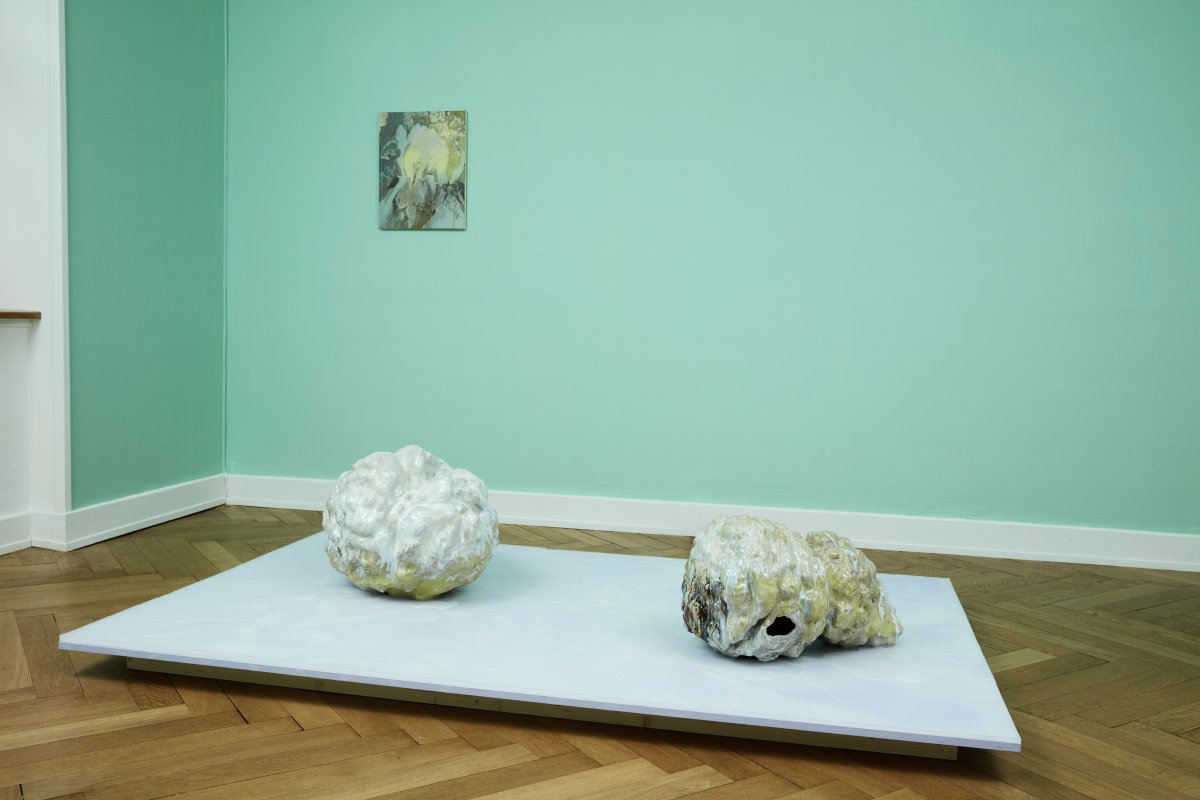
2 pieces from the series Expanding bodies, 2022. Installation with paraffine wax, acrylic, mdf
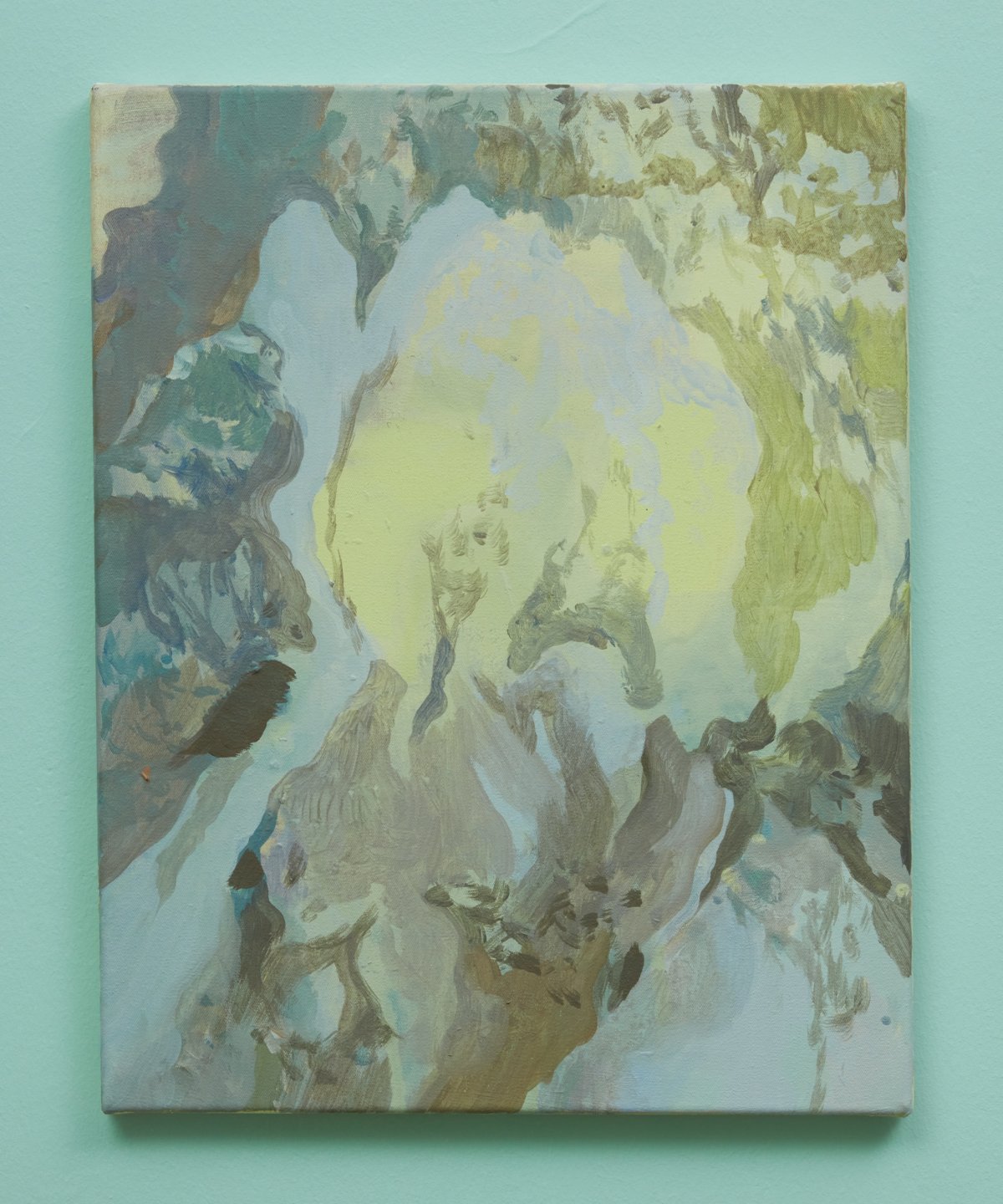
Sulfur, 2022, acrylic on cotton, 48 cm x 38 cm
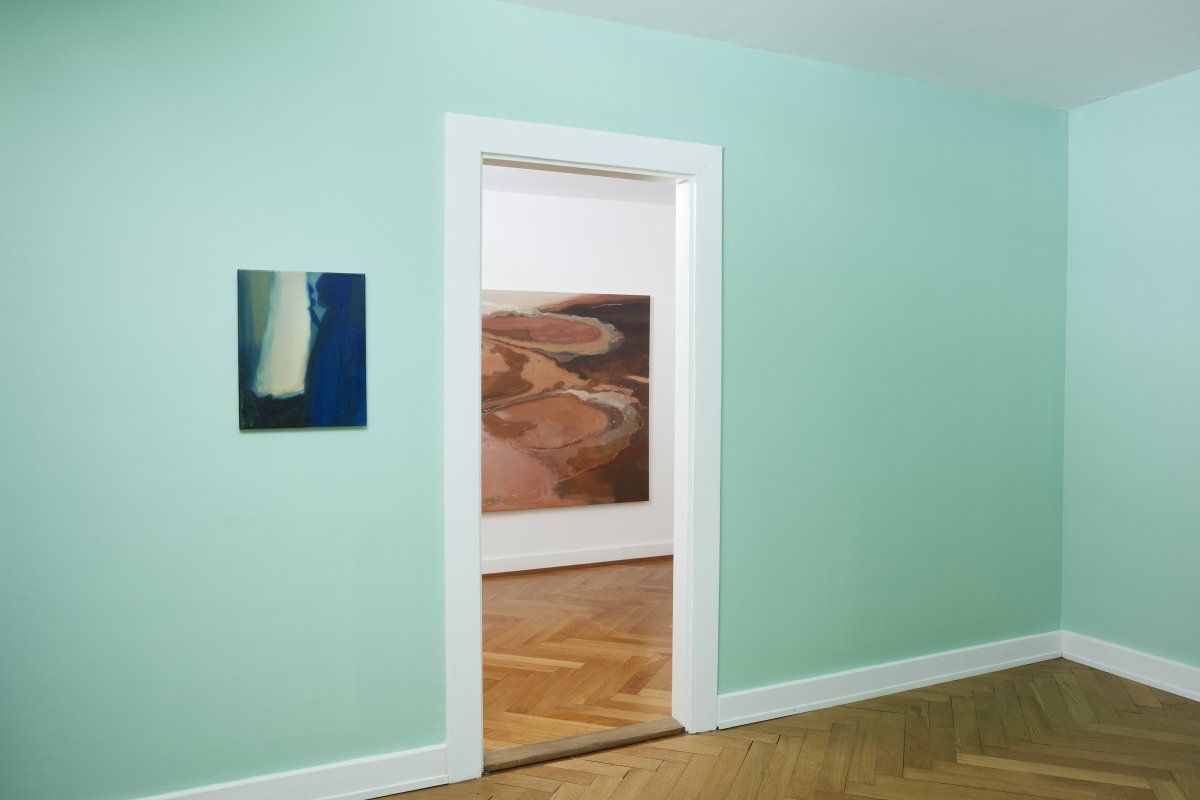
Blue (niña azul), 2022, acrylic and oil on cotton, 48 cm x 38 cm. In the background: Bauxite, afternoon silence, 2022, acrylic on canvas, 150 cm x 210 cm
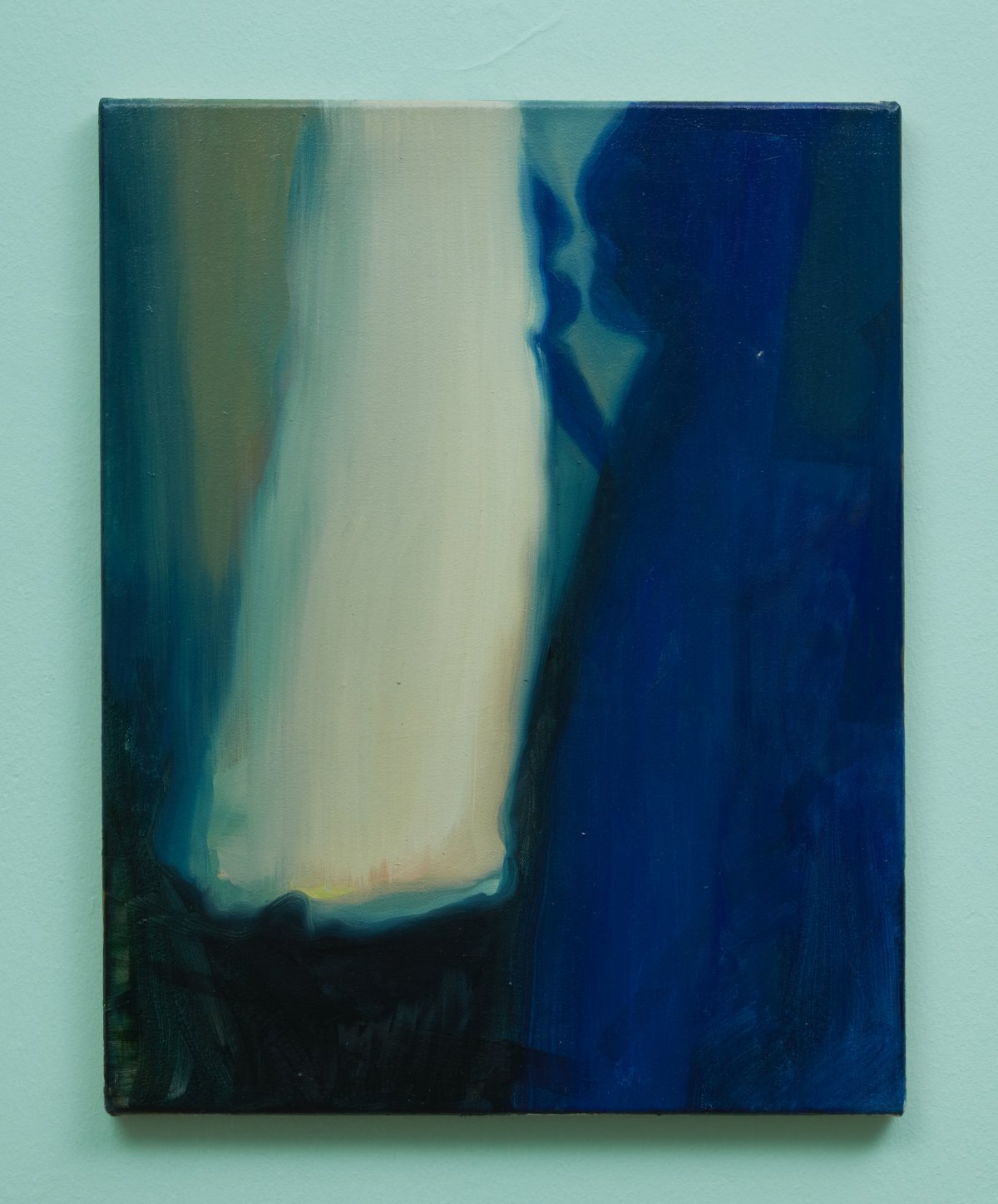
"mud lies around being sweet and heavy and oozy and generative" and can “yield and react and respond and give way and adapt and accept"
Ursula K Le Guin
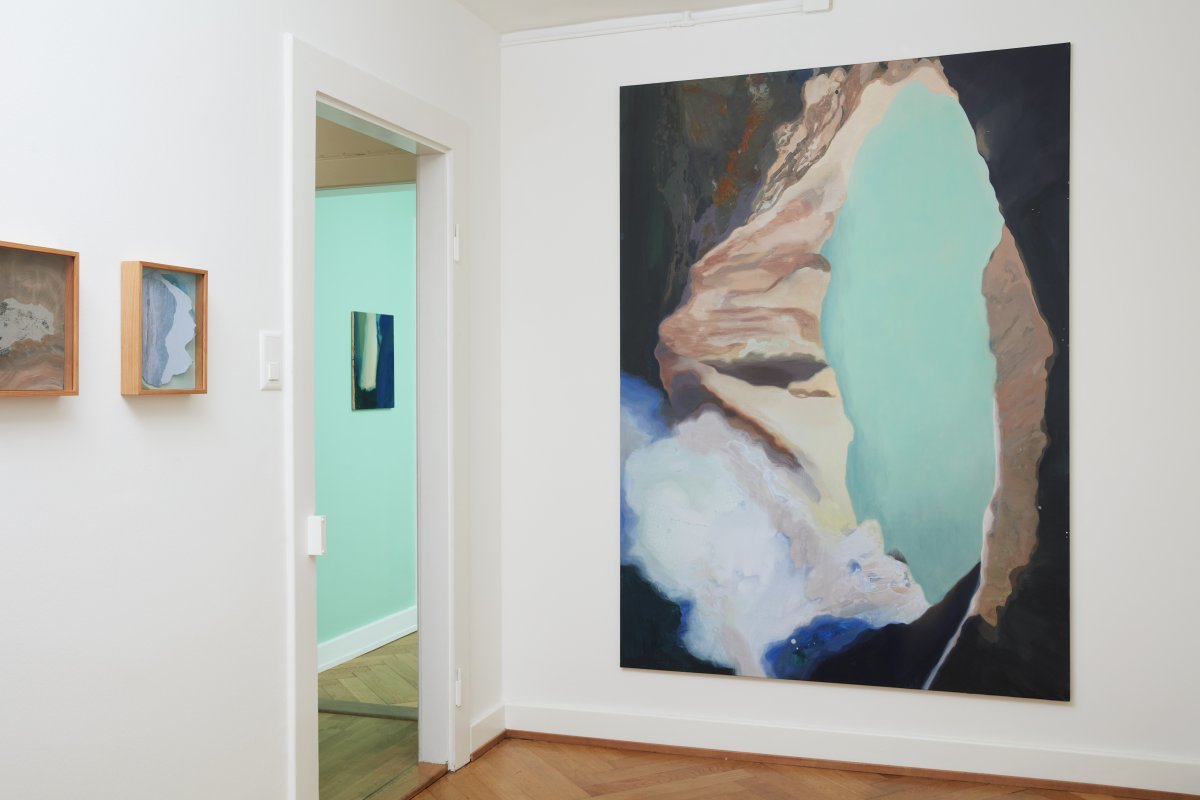
On the right side: Caldera, iridescent lake, 2022, acrylic on cotton, 210 cm x 150 cm
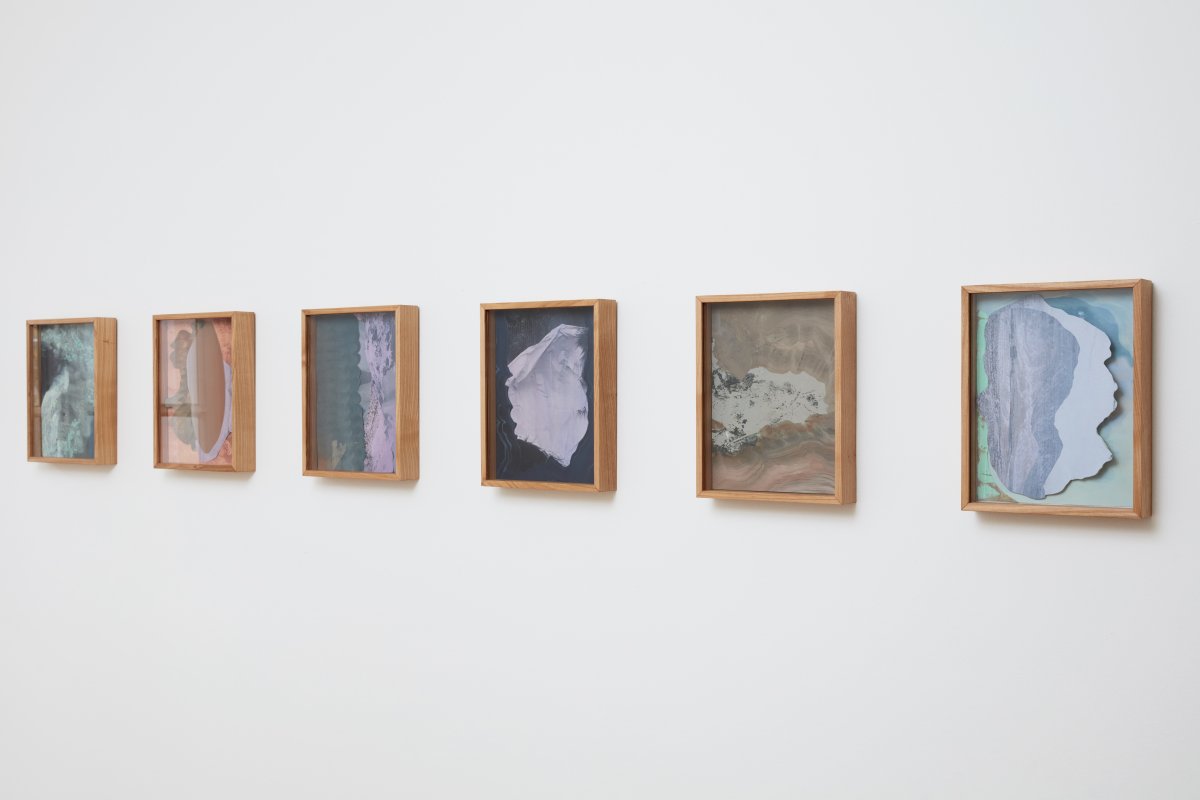
As the sun breaks into the day, 2021/2022, 6 pieces of the ongoing series, mixed media on paper, cherry wood, glass, 26cm x 20 cm
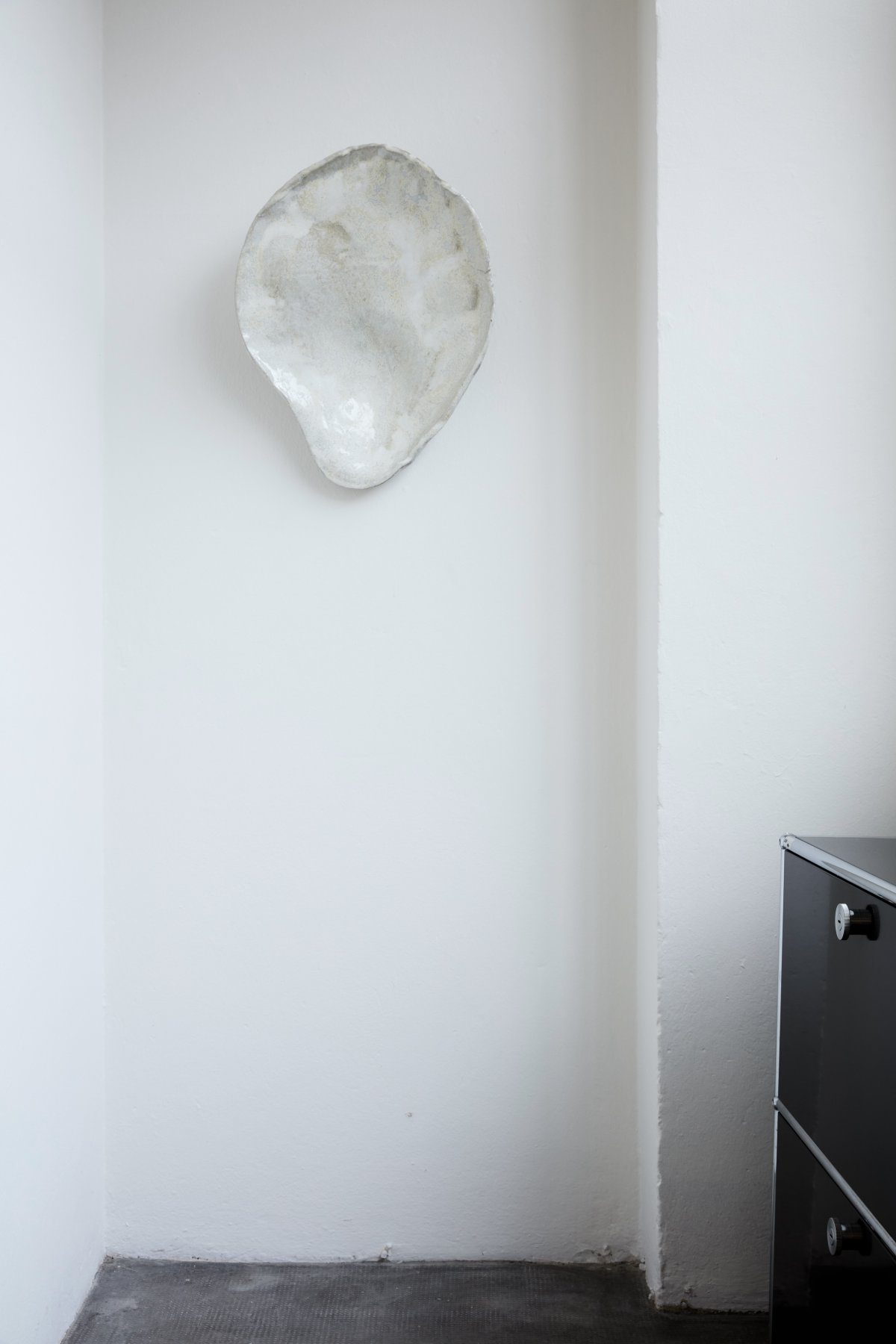
Kochíli, 2022, clay, burned and glazed, around 20 x 40 x 50 cm